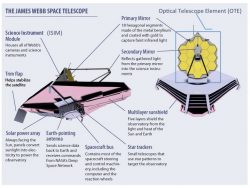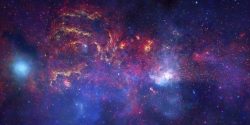The highly anticipated James Webb Space Telescope (or as NASA affectionately calls it, Webb) will be spreading its golden wings very soon!
Initially scheduled for a 2007 launch, the project has since gone through countless major delays, cost overruns and technical glitches.
But progress on Webb is finally at its last stages and NASA officials are confident that the successor to the iconic Hubble Space Telescope is ready for space deployment by the end of this year. Check out this cool video of the magnificent telescope being assembled and tested.
This news will surely keep astronomers and space enthusiasts on the edge of their seats!
The golden ratio of human curiosity and innovation.
Webb will be the largest, most powerful and complex telescope humankind has ever built and sent into space. With its 6.5-meter golden primary mirror made of beryllium, which will unfold and adjust to shape after launch, the telescope already has “iconic” written all over it.
An international collaboration between NASA, ESA (the European Space Agency) and CSA (the Canadian Space Agency), Webb will look much closer to the beginning of time and hunt for the unobserved formation of the first galaxies, as well as look inside dust clouds where stars and planetary systems are forming today.
The main payload of the telescope – dubbed the Integrated Science Instrument Module (ISIM) – houses a suite of innovative technologies that will aid astronomers in their space research.

Description of the James Webb Space Telescope. Photo credit: NASA
Four main instruments on Webb.
Webb’s primary imager, the Near Infrared Camera (NIRCam), will cover the infrared wavelength range from 0.6 to 5 microns. It aims to detect light from the earliest stars and galaxies in the process of formation, the population of stars in nearby galaxies, as well as young stars in the Milky Way and Kuiper Belt objects.
The innovative Near InfraRed Spectrograph (NIRSpec), designed to observe up to 100 objects simultaneously, will be used by astronomers to analyse the temperature, mass and chemical composition of faraway objects. It’s the first spectrograph in space that has this remarkable multi-object capability.
Cooled by a cryocooler onboard Webb, the Mid-Infrared Instrument (MIRI) has highly sensitive detectors that will allow it to observe the redshifted light of distant galaxies, newly forming stars and faintly visible comets, as well as objects in the Kuiper Belt. Expect its camera to churn out the breathtaking astrophotographs that have made Hubble so universally admired.

In the International Year of Astronomy 2009, Hubble, Spitzer and Chandra produced a matched trio of images of the central region of Milky Way. Shows the wavelengths of each observatory. Photo credits: NASA/JPL-Caltech/ESA/CXC/STScI
The final instrument is the Fine Guidance Sensor/Near-Infrared Imager and Slitless Spectrograph (FGS/NIRISS). FGS will act as a “guiding star”, allowing Webb to point precisely so that it can take high-quality images. Once pointed in the right direction, NIRISS will look for the first light, undertake exoplanet detection and characterisation, and perform exoplanet transit spectroscopy.
Revolutionising space exploration.
From detecting the first post-Big Bang stars, to uncovering how black holes form, the launch of Webb will surely unravel the web of mystery behind the creation of our Universe.
The deep anticipation and exhilaration surrounding Webb are palpable among the space community. Team_DUG, particularly our Science Writer, will definitely be reeling with excitement for its take-off this year.




































